Into the Wilds of Finland
May 2025: As part of our two-week journey through the Nordic north—including time in Sweden and Northern Norway—my family and I continued on to Finland, with one main goal in mind:
Wildlife watching in the remote forests near Kuhmo, in the eastern part of the country, just a short distance from the Russian border.
Three Days on the Edge of the Taiga
We spent three days deep in the forest, right along the Finnish-Russian border, immersed in the quiet, untouched beauty of the taiga biome—a vast wilderness of pine, spruce, and bog.
Each day was dedicated to one purpose: waiting in silence and anticipation from inside a wildlife hide, hoping for a glimpse of the region’s elusive predators.
The patience paid off.
I was lucky enough to see wild wolves and brown bears, moving silently through the forest—an unforgettable experience and a major highlight of our Nordic journey.
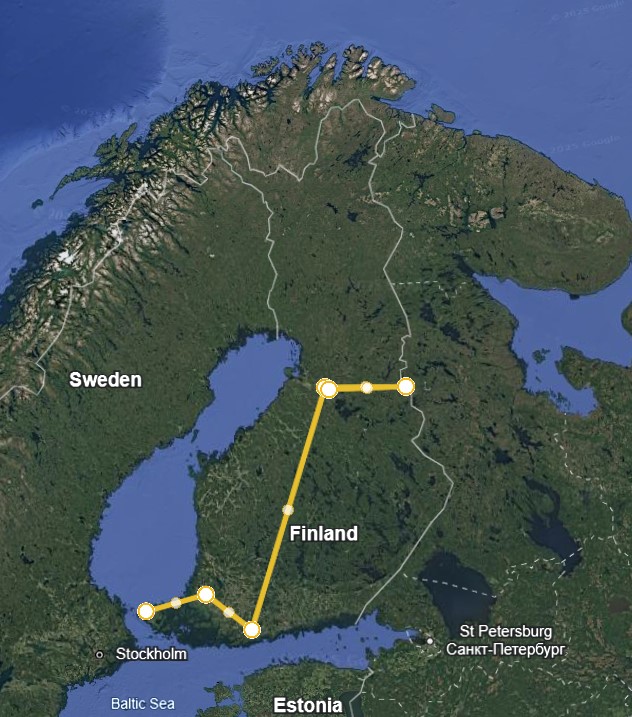
Our path across Finland
Crossing Finland: From Island Archipelagos to the Russian Border
Our journey through Finland began in the Åland Islands, an autonomous archipelago of Swedish-speaking islands nestled in the Baltic Sea. From this peaceful outpost, we boarded a ferry to Turku—the old capital of Finland and one of the country’s oldest cities.
By Train to the Wild East
From Turku, we caught a train northeast to Kajaani, a small town deep in Finland’s interior. There, we rented a car and drove farther east to Kiki Lodge, near Kuhmo and the Russian border.
This remote region—dense with taiga forest and far from the reach of cities—would be our base for several days of wildlife watching. Hidden in a forest hide, I’d eventually witness wild wolves and bears moving silently through the undergrowth—a raw and unforgettable experience.
The Journey Onwards to Norway
After our time in the wilderness, we took a train back to Helsinki, where we spent a quick overnight before catching our next flight. The next leg of our Nordic adventure would take us to Tromsø, Norway, high above the Arctic Circle.
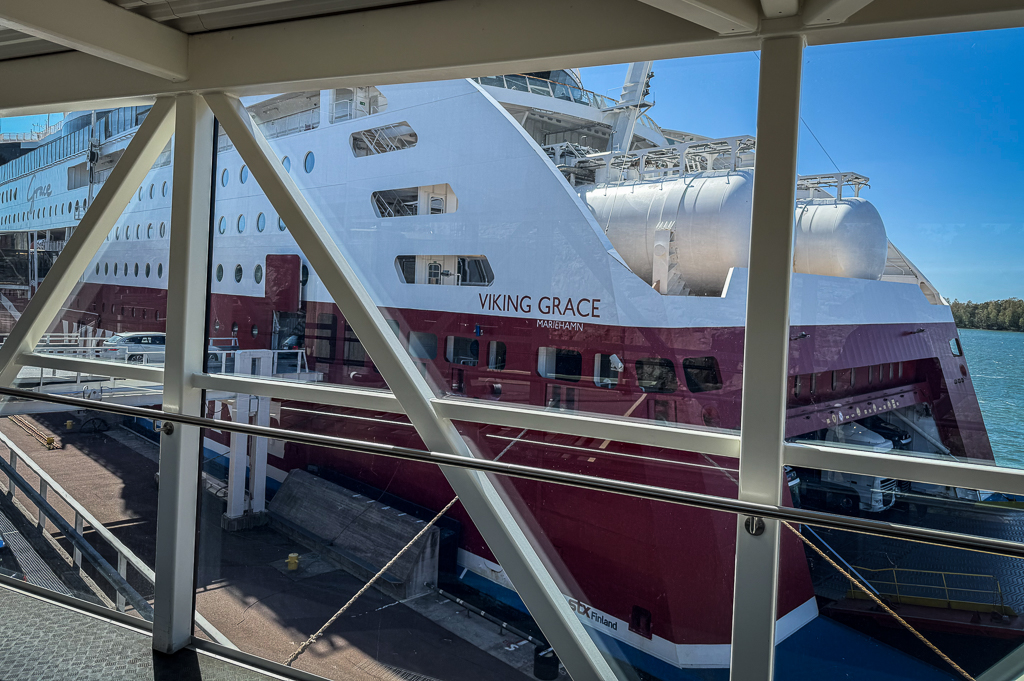
The ferry we took to Turko from the Aland Islands
Ferry from Åland to Turku: A Floating Celebration Through the Archipelago
Our journey across Finland began in a relaxing and memorable way—aboard a ferry from the Åland Islands to Turku.
The ship was buzzing with energy, packed with celebratory Swedish and Finnish tourists. Many were onboard to take advantage of duty-free shopping, since the Åland Islands are outside the European Union’s tax zone. It gave the whole experience a festive, almost cruise-like feel.
Scenic Views and Baltic Vibes
As we sailed through the Baltic Sea, the ferry passed by thousands of forested, rocky islands—a stunning, slow-motion panorama of the archipelago’s natural beauty.
As we neared Turku, the scenery became even more striking:
We drifted past islands dotted with everything from quaint, rustic cabins to large, luxurious mansions—many of them classic in style, reflecting Turku’s historical status as the former capital of Finland.
The ship itself was lively and well-equipped, offering:
-
Live music performances
-
A wide range of restaurants and bars
-
Plenty of observation decks to enjoy the sea views
A Much-Needed Rest at Sea
Despite all the entertainment and scenery, we were still feeling the weight of jet lag, so we made the decision to spend most of the 5-hour crossing napping in our cabin.
Sometimes the best way to travel is to rest while you move, and the gentle rocking of the ship provided the perfect setting to do just that.
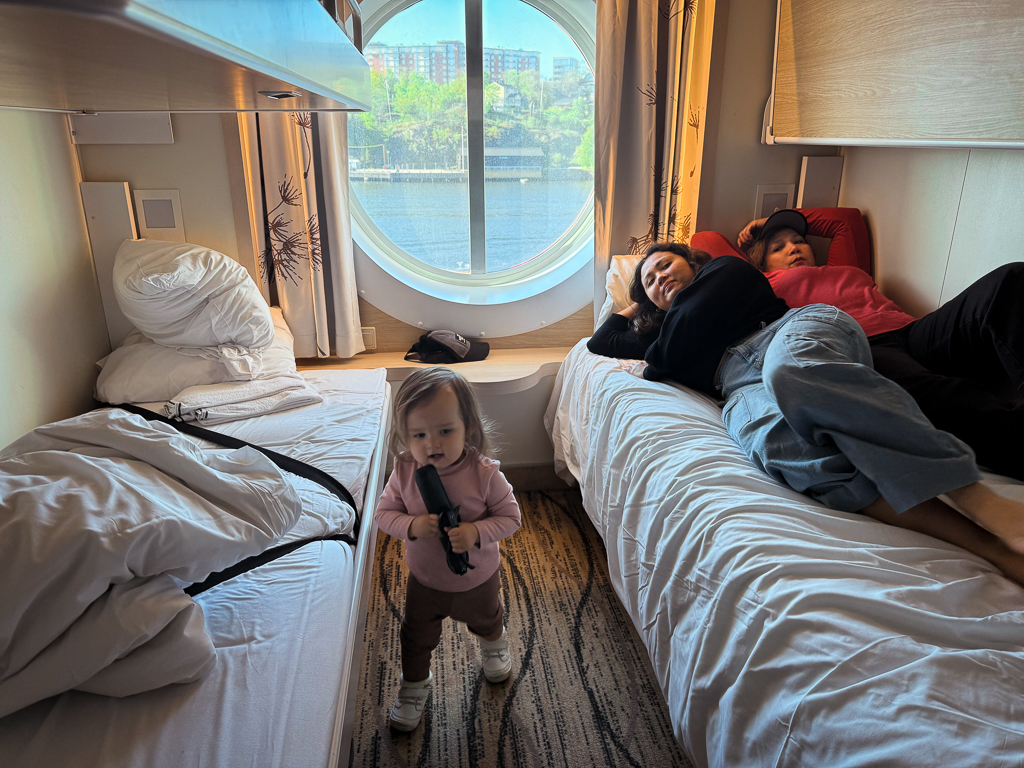
The ferry we took
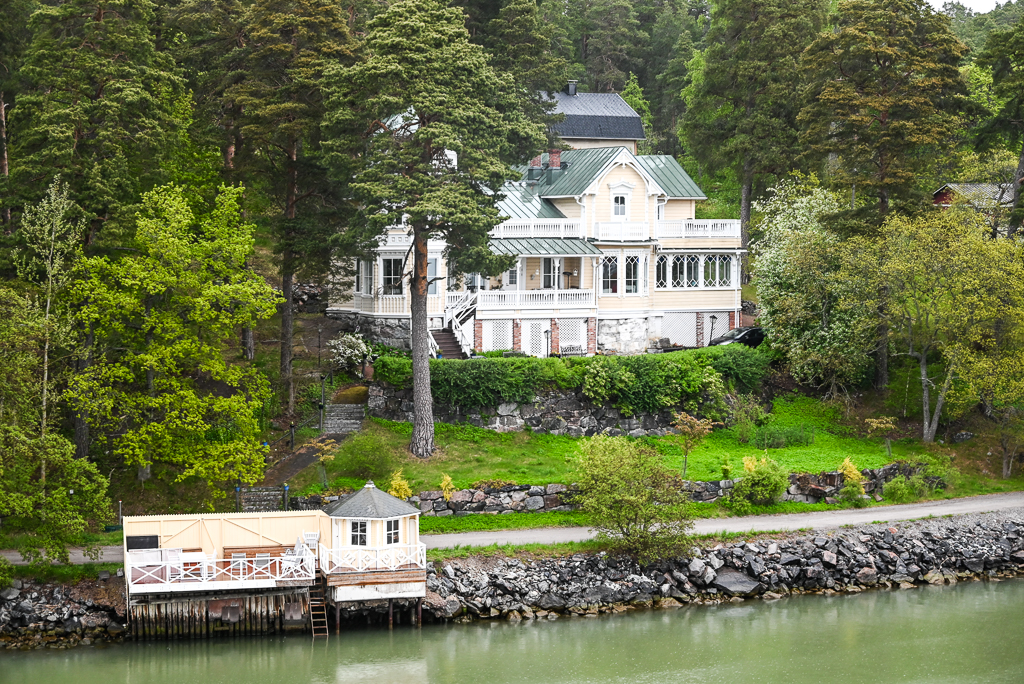
A historical mansion on one of the islands as we approached Turko
Hiisi Hotel Turku Seaport: A Castle-Side Oddity in the Age of Contactless Hotels
Our stay for the night was at Hiisi Hotel Turku Seaport, located right next to the ferry terminal and just a short walk from the 13th-century Turku Castle, one of Finland’s most iconic historical landmarks.
But the real surprise—and a somewhat disturbing trend I’ve started noticing across Europe—was that the hotel was completely contactless and staff-free. There were no employees on-site. Everything from entry to check-in was handled through an automated process, supposedly designed to save money and, as the hotel oddly claimed, to help guests avoid the “uncomfortable interactions” of speaking to hotel staff.
In theory, it sounded efficient. In practice, after a long day of travel, rain, and jet lag, it was a hassle.
By the time I figured out:
-
How to enter the building using a keypad
-
And how to retrieve our room key using a set of emailed instructions and a vending-style machine
—I was more frustrated than relieved.
What was meant to be “frictionless” ended up feeling cold, impersonal, and needlessly complicated—a disappointing trade-off for the human connection that once defined hospitality.
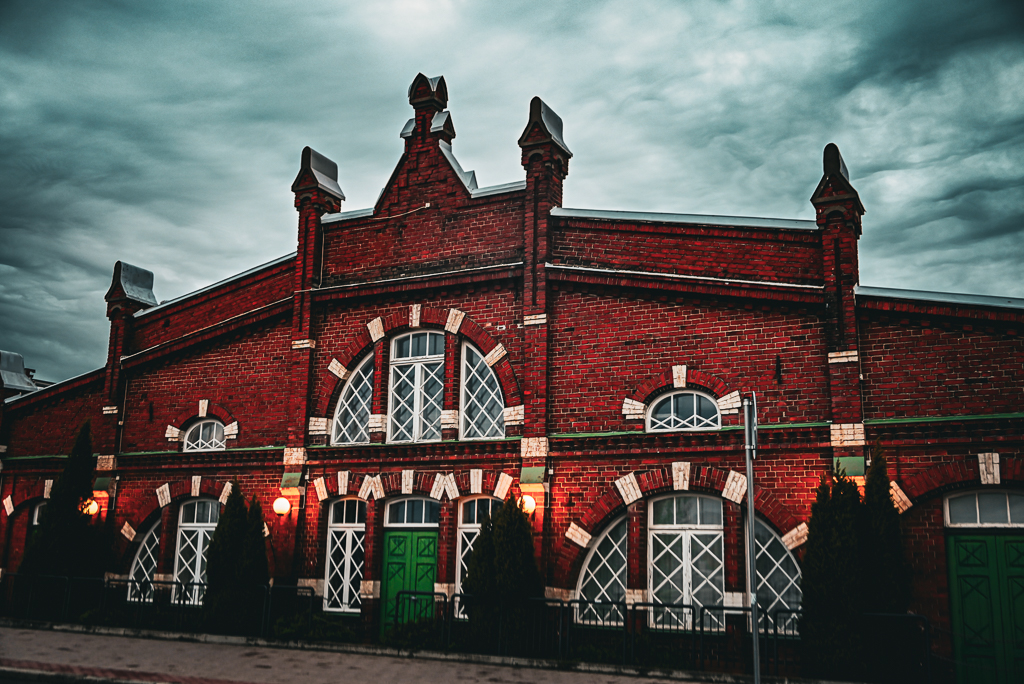
Hiisi Hotel Turku Seaport
A Quiet Birthday Eve in Turku
It was the eve of my birthday, and after a long day of travel, the rain finally stopped. It was 10 p.m., a little late to go searching for food and a beer—but I decided to try anyway.
Though the sun had technically set, it never truly got dark—a surreal reminder that we were now far enough north to experience the endless twilight of the Scandinavian summer.
Stillness by the Seaport
The port area was quiet and almost eerily still. Most places were closed, and there was hardly any sign of life, aside from a few scattered historic houses and the towering presence of Turku Castle, its medieval stone walls softly illuminated in the pale northern light.
We paused to take a few photos by the 13th-century fortress—the oldest medieval structure in Finland, originally built by the Swedes as a military fortification.
A Restless Night in a Hot Room
After a short walk and quiet wander, I gave in to the fatigue.
It was time to catch up on sleep—or try to, anyway.
Our hotel room was excessively heated, a feature we would find all too common throughout the Nordic countries. With no option to open a window, the room felt stifling, making it hard to sleep and reminding me how even modern comforts in Scandinavia can sometimes be surprisingly inconvenient.
Tomorrow, we’d be boarding a long train journey to Kajaani, venturing even deeper into Finland’s eastern wilderness.
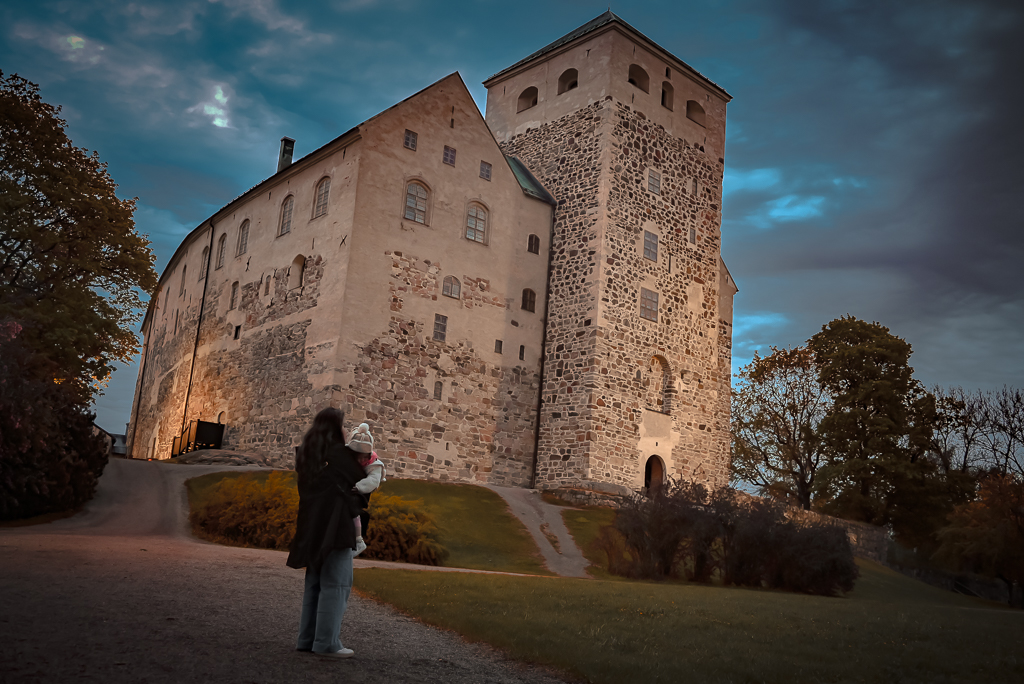
Turko Castle
The Train to Kajaani: Silence, Snark, and a Sleeper Hit for Indie
The next morning, we woke early and took a taxi to the Turku train station to begin our 8-hour rail journey to Kajaani, deep in northern Finland. We had one connection near Helsinki, and knowing how long the day would be, I decided to book business class tickets for a bit more comfort and extra space for Indie.
A Sweet Moment Interrupted
We boarded the train, found our seats in the nearly empty business class cabin (only about seven people total), and settled into the roomy, plush chairs.
Just a few minutes in, Indie turned to Paula and mumbled something that sounded suspiciously like “I love you.”
Paula lit up—this was the first time she had ever said it—and I reacted with joy and excitement.
But before we could savor the moment, an elderly Finnish woman seated in front of us turned around with an icy glare and snapped,
“Excuse me… this is a quiet zone,”
while pointing sternly at a sign above her seat.
Finland’s Interpretation of Silence
I’ve been on plenty of business-class trains and know how to be courteous. I figured “quiet zone” meant no phone calls, no music, and no loud conversations. But it didn’t take long to realize that this was Finland’s interpretation of silence—and they weren’t joking.
This is, after all, a country famously known for its deeply reserved culture, where people rarely speak loudly in public and social silence is both expected and respected.
There was even a soundproof booth at the front of the cabin reserved just for phone calls.
Here, “quiet” didn’t mean subdued—it meant total silence. Not a peep.
We tried to comply… but Indie had other plans.
Evacuated to Plan B
She started crying. Loudly. Then, to make matters worse, she messed her diaper, and soon the cabin began to smell, adding fuel to the scowling stares now coming from all directions.
A conductor, noticing the growing tension, kindly suggested we relocate to another cabin—less luxurious, but with fewer expectations of monk-like silence.
Oddly, this new car also felt tense and overly quiet, so we soon packed up again and made our way to the food car.
Sanctuary in the Café Car
The food car was a welcome change.
It had a livelier atmosphere, a table with more space, and most importantly—no unspoken cultural rulebook hanging over our heads.
We ended up spending almost the entire train ride there, rotating turns walking with Indie and gazing out at the beautiful scenery of forests and lakes rushing by.
The Secret Kids’ Car (That No One Told Us About)
On the return trip, something magical happened—though not until halfway through.
A conductor noticed Indie and casually mentioned,
“You know there’s a children’s cabin with a huge playroom, right?”
We had no idea this existed.
Apparently, the train had a full kid-friendly car—complete with a jungle gym, a slide, and space for kids to play.
When we brought Indie there for the first time, her eyes lit up and she gasped,
“Wow… wow!”
It was perfect. And a bit frustrating, considering no one mentioned it earlier.
A Refund and a Lesson Learned
While the train itself was clean, smooth, and scenic, the cold welcome we received in business class left a bitter first impression.
Since we never really got to enjoy the premium seats—except briefly on the way back when the cabin was empty—I requested a refund.
To their credit, the train company granted it without issue.
If I ever take a Finnish train again, I now know:
Silence means silence.
And in Finland, that’s not just a suggestion—it’s a cultural standard.
When traveling with a toddler, always ask about the children’s cabin first.
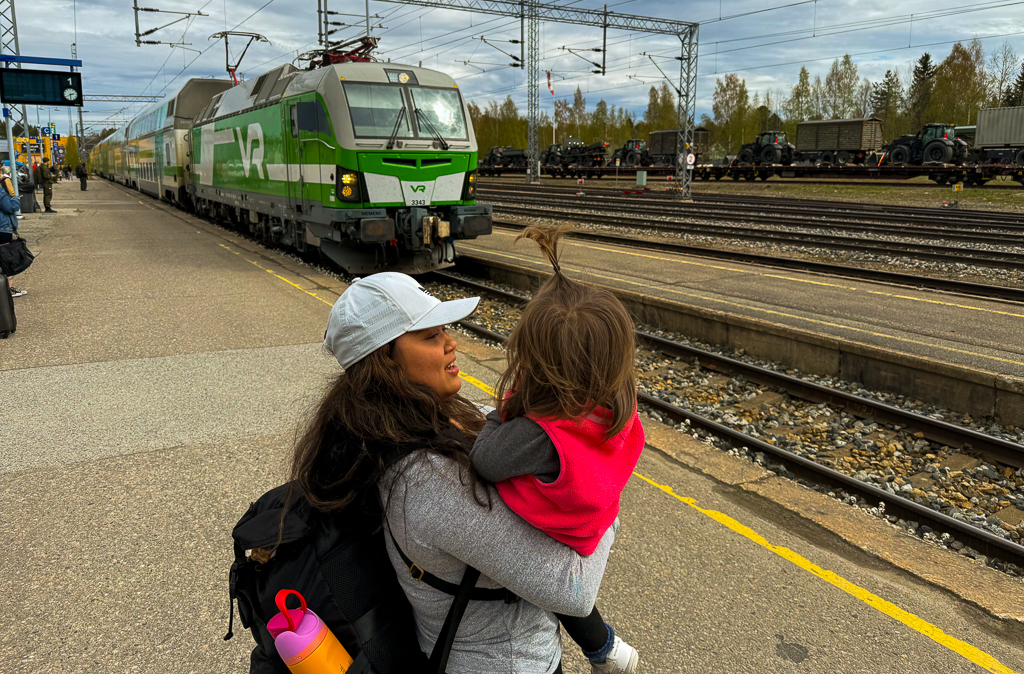
Boarding the train- Indie’s 2nd train after the previous years train journey across Germany
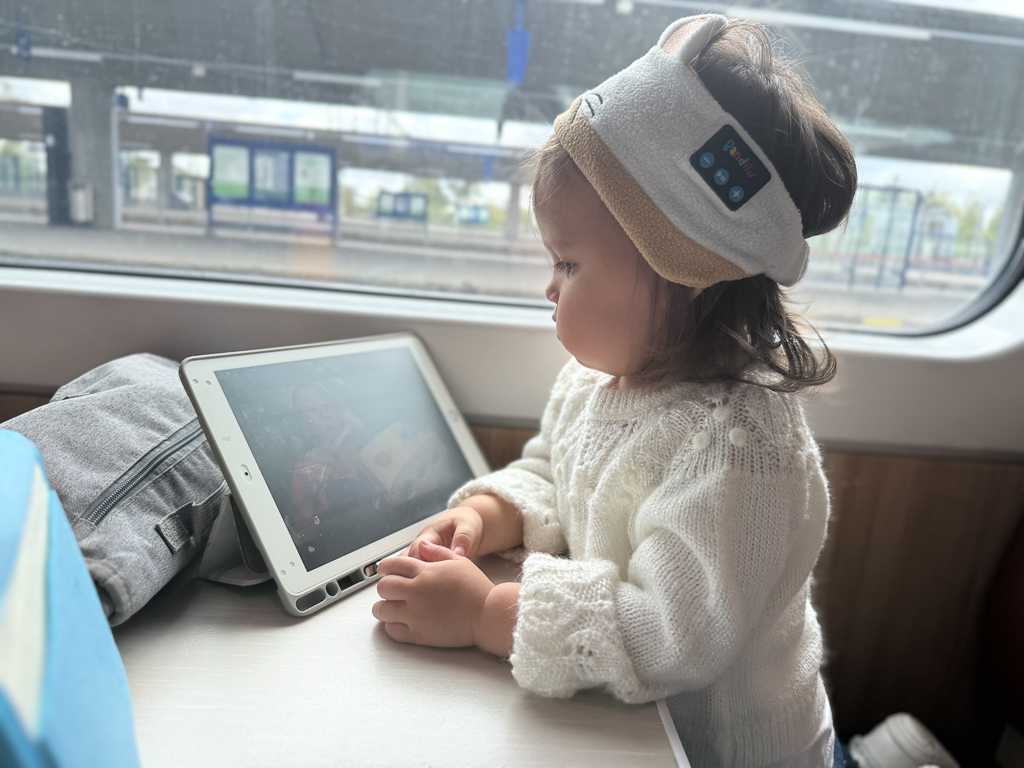
Indie watching Ms.Rachel on the train
We arrived to the sleepy historical looking old train station of
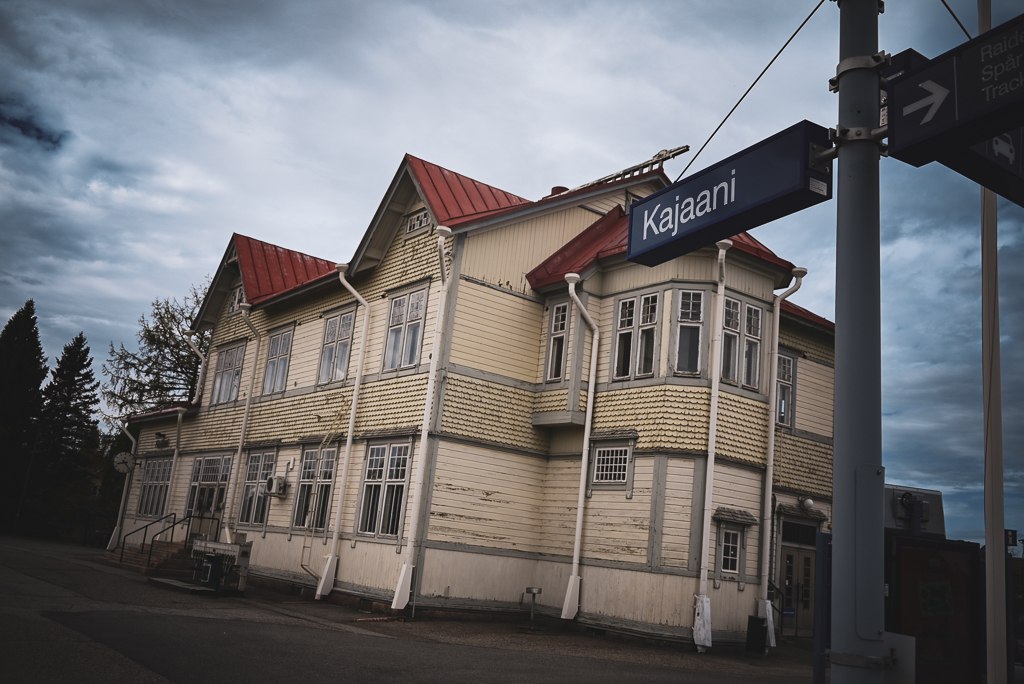
Kajaani historical train depot
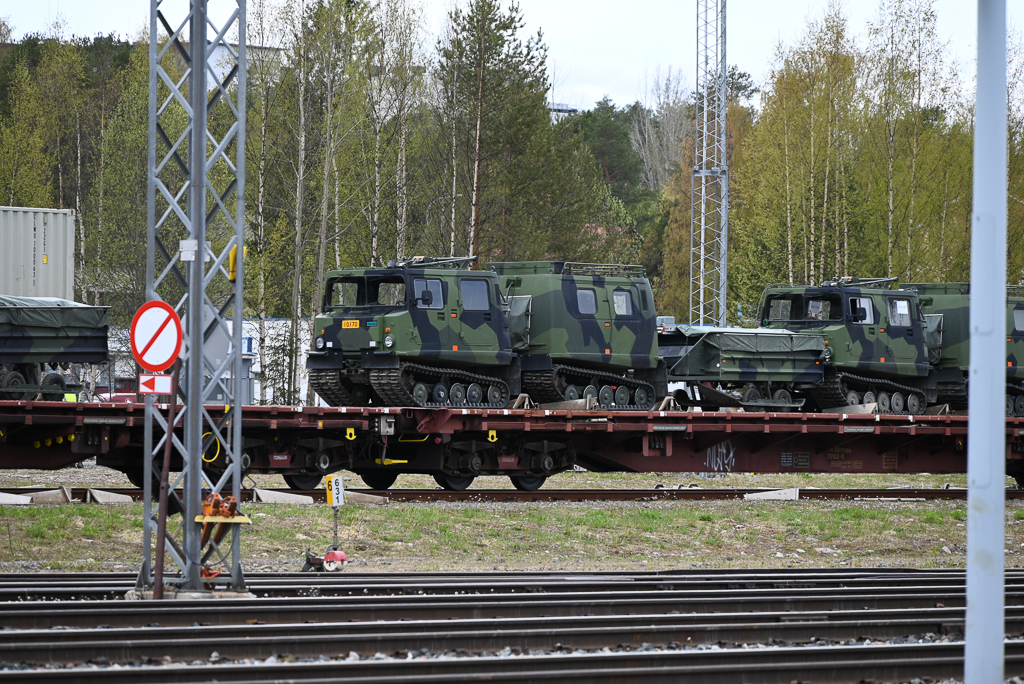
Tundra military vehicle train convoy heading to the remote northern Lapland
Arrival in Kajaani: A Borderland in Tension and Trust
We arrived in Kajaani in the late afternoon, pulling into a relaxed, historical-looking train depot that felt more village than border town. But despite its quiet setting, Kajaani lies not far from Finland’s long border with Russia—a fact that has taken on renewed weight in recent years.
Military Presence and NATO’s Shadow
With Finland’s recent accession to NATO, there was a sense of quiet readiness in the air.
Rumors swirled of Russian troop buildups just across the border, and we saw the tangible signs of Finland’s response:
-
Finnish military personnel—both men and women, many still young—reporting for duty in uniform
-
A long train caravan loaded with tundra-ready war vehicles, rumbling north toward Lapland
-
Visible signs of mobilization along Europe’s newest NATO front line
It felt like history was still unfolding in these remote woods—the edge of the West.
Car Rental, the Finnish Way
At the station, I had arranged for our rental car to be delivered directly—a larger wagon this time, to comfortably hold all of our gear for the next leg of the journey.
The young man who dropped it off had forgotten his credit card scanner, so he just smiled and said,
“I’ll email you a payment link later.”
He didn’t even ask for a driver’s license or ID.
That moment stood out. It wasn’t carelessness—it was trust.
And that quiet, confident trust was something I noticed repeatedly in northern Finland.
Into the Taiga: Driving Toward Kiki Lodge
We began our 2–3 hour drive east, heading through a landscape of desolate forests and scattered lakes.
Every now and then, we’d pass an old farmstead, surrounded by rich, fertile fields that looked almost out of place in the rugged taiga terrain.
The farther we drove, the more it all began to feel oddly familiar.
With the dense pine woods, flat country roads, and quiet stillness, it reminded me eerily of northern Minnesota—and more than once, I found myself feeling like I was back on the road to Ely.
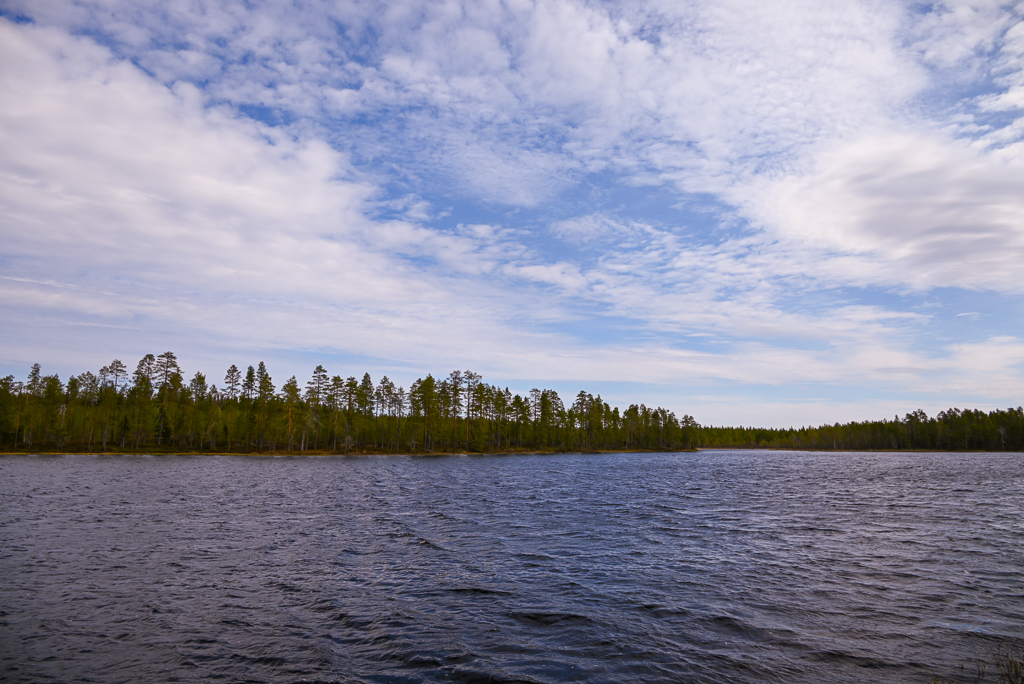
Finland glacial lake of north
Arrival at Kiki Lodge: A Wilderness Outpost for the Wildlife-Obsessed
After hours of driving through winding dirt roads, flanked by endless groves of taiga forest and glassy northern lakes, we finally arrived at Kiki Lodge.
This wasn’t a tourist hotspot. It was remote, humble, and deeply quiet—a place reserved only for the most intrepid travelers, those who journey to the far edges of Finland with one goal:
To see wild creatures in their natural world.
A Modest Base in the Middle of Nowhere
Kiki Lodge is small and unassuming.
A few rustic cabins dotted the property, along with a simple lodge building where our two adjoining rooms were located.
It wasn’t fancy. It wasn’t busy.
But that’s exactly what made it feel so special—a true basecamp for wildlife watching, not luxury tourism.
A Finnish Welcome by Sepp
We were greeted by Sepp, a burly, lumberjack-looking man in his early 60s with a deep voice and a quiet warmth.
Without much ceremony, he informed us that dinner was ready—a generous buffet of hearty Finnish fare:
-
Meats, cheeses, thick breads
-
Root vegetables and warm, earthy flavors
-
The kind of meal meant to sustain you through a long night in the wild
The Birthday Shift Begins
After dinner, Paula, her mom, and Indie settled into the warmth of their lodge room for the night.
As for me—this would be no ordinary birthday.
Sepp loaded me into his vehicle and drove me 15 miles deeper into the forest, where I would be dropped off at my wildlife hide—a small, ramshackle hut, barely more than a box in the woods.
There, I would spend the night alone, hidden and silent, waiting to see if Finland’s wolves or bears would appear.
A birthday unlike any other—spent not in celebration, but in solitude, silence, and wild anticipation.
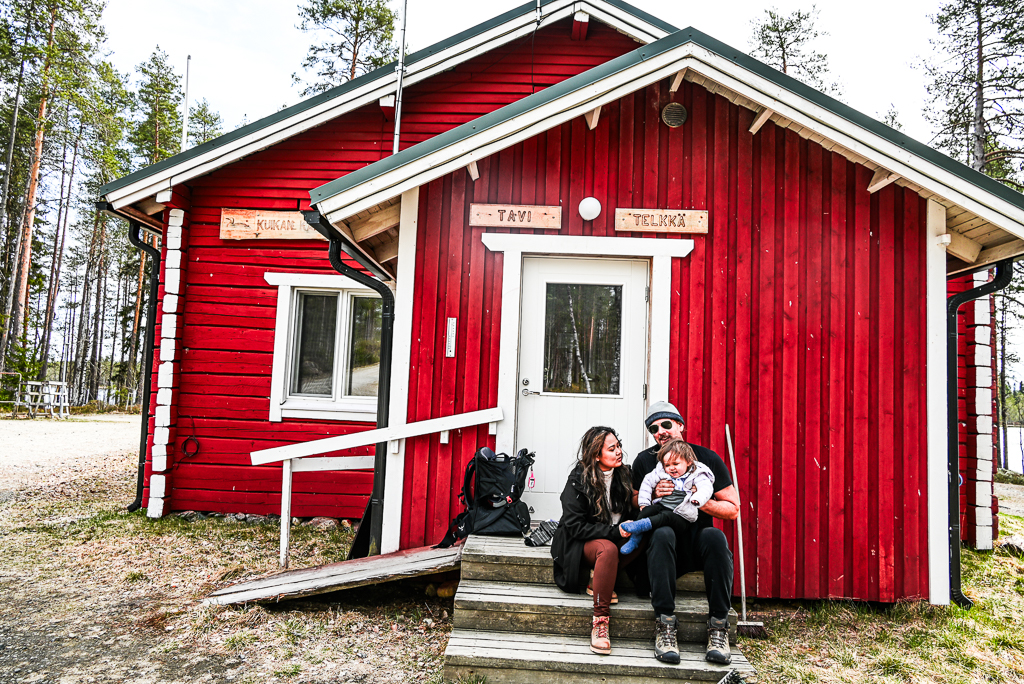
Three Days in the Wild: Kiki Lodge and Finland’s Predator Frontier
We spent two nights and three days in the private reserve of Kiki Lodge, a remote stretch of wilderness that borders both government-protected land and Russia’s vast taiga.
This part of Finland is as far from city life as you can get—pure boreal forest, stillness, and sky.
Days by the Lake, Hikes Through Silence
During the daylight hours, we took time to relax and wander the trails surrounding the lodge.
A beautiful lake sits just behind the property, its surface glassy and still, framed by forests where moose are occasionally spotted along the banks.
I had hoped to see one.
In fact, I expected to—after all, in Finland and Norway, you see moose crossing signs everywhere, yet somehow… I didn’t spot a single one.
What I Really Came For
But my real hope wasn’t for moose.
I had come for a trio of legendary predators:
-
The wolverine
-
The European brown bear
-
And above all, the elusive timber wolf
This reserve near Kuhmo is considered one of the best places in Europe—if not the world—to see wild wolves.
As someone who grew up in Minnesota, I’ve spent years camping and hiking the north woods, where more than 2,000 wolves roam—the highest population in the continental U.S.
And yet, I had never seen a single one in the wild.
Two Nights. Two Wolves.
That changed here.
After just two nights in the hide, sitting in silence and staring out into the taiga, I was rewarded:
I saw two wild wolves—stepping quietly out from the shadows of the forest, just long enough to steal my breath.
For me, it was nothing short of extraordinary—the kind of moment you dream of as a child reading about wilderness in books and hope you’ll one day live for real.
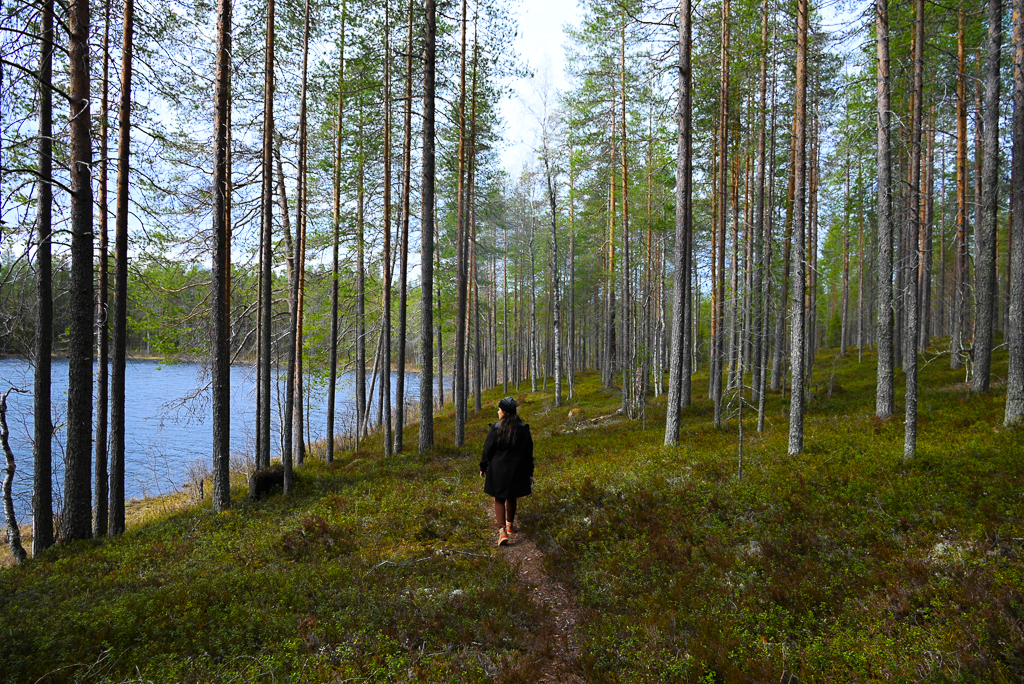
Paula hiking around the lake
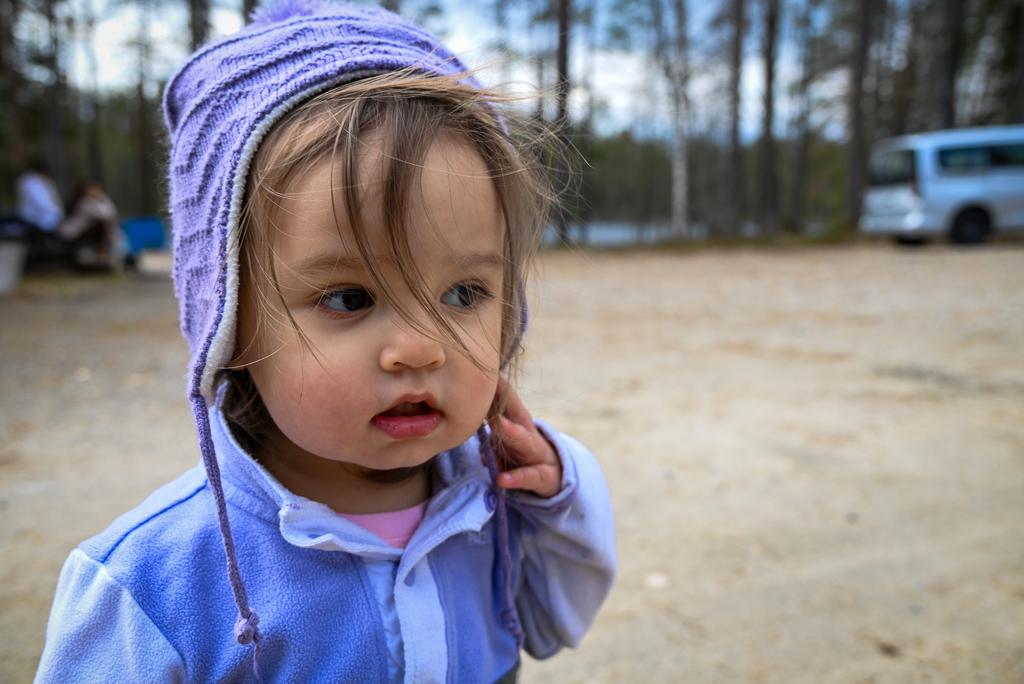
Indie on the hike
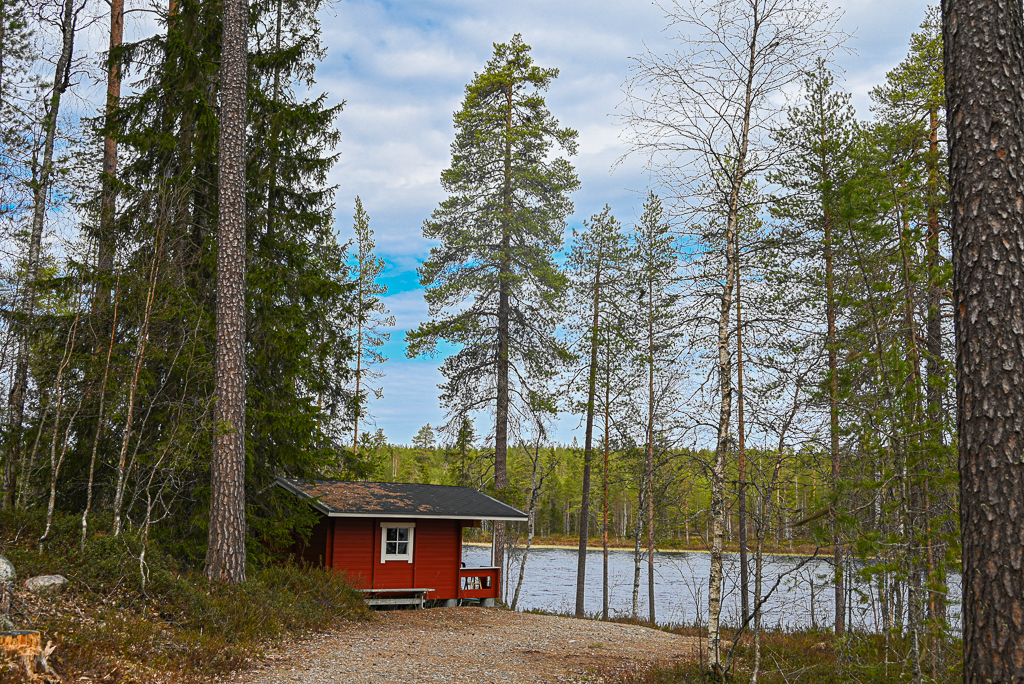
One of the lake cabins on the lodge
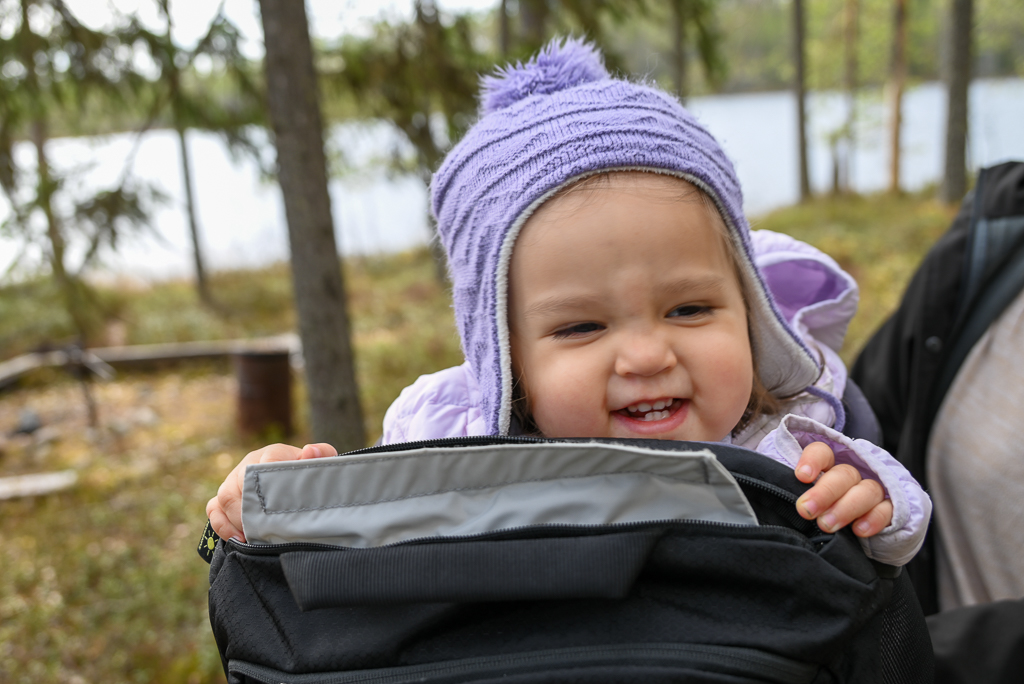
Indie in my baby carrier on the hike
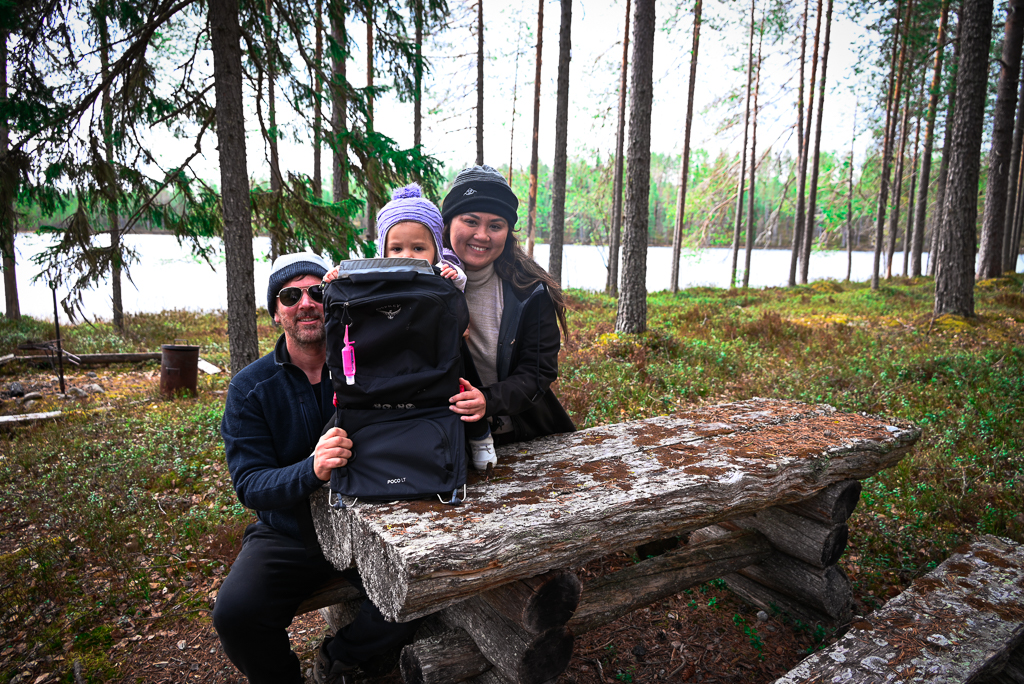
Happy family in Finland
Into the Hide: A Night Among the Apex Predators of the Taiga
The real adventure began each afternoon, stretching through the night, when I would head out to a wildlife viewing hide deep in the forest.
This is where the magic happens—where Finland’s apex predators emerge from the shadows of the taiga.
A Vision Turned Reality
Decades ago, a Finnish wildlife photographer purchased this forest land—once government-owned—with the dream of making the region’s bears, wolves, and wolverines visible to others.
He did so by creating a network of hides, allowing wildlife photographers and nature lovers to sit in complete silence, concealed, and waiting for the forest to reveal its secrets.
To improve the chances of sightings, small amounts of pig and fish scraps are left in select areas—drawing animals into view in a way that feels wild, yet respectful.
The Journey to the Hides
To reach the hides, it’s about a 20-minute drive from the lodge along a remote dirt road weaving through dense taiga forest.
As we bumped along, I noticed several makeshift wooden towers scattered beside the road. When I asked my guide about them, he explained they were old moose hunting towers, once used by Finland’s former president, who had previously used this forest as a private hunting reserve.
Now, instead of rifles, the forest welcomes telephoto lenses and binoculars.
A Borderland Still Under Watch
Although it felt like the middle of nowhere, we were only 1 kilometer from the Russian border.
Thanks to the military presence on both sides, cell phone service in the area was surprisingly strong—boosted by towers that now double as communication support in this geopolitically sensitive region.
The guide mentioned that tensions have risen along the border since Finland joined NATO.
“In the past,” he said, “Finnish and Russian patrols would sometimes help each other if someone got lost in the forest. Now? They don’t speak at all.”
It was a sobering reminder that even in the wild, politics isn’t far behind.
Two Nights, Two Hides
On my first night, the guide drove me to a hide deep in the forest, surrounded by towering pine trees.
He dropped me off around 10 p.m., and I spent the entire night alone, in a ramshackle wooden hut, waiting in silence.
By 9 a.m. the next morning, he returned to collect me.
The next night, I drove myself and followed the guide to a different hide, this time located along the edge of a wide, open swamp.
The view was unobstructed, ideal for spotting wildlife in the pale light of the Arctic night.
This time, Paula joined me, and we sat together quietly in the hide until midnight, sharing in the thrill of the unknown, watching the wilderness breathe.
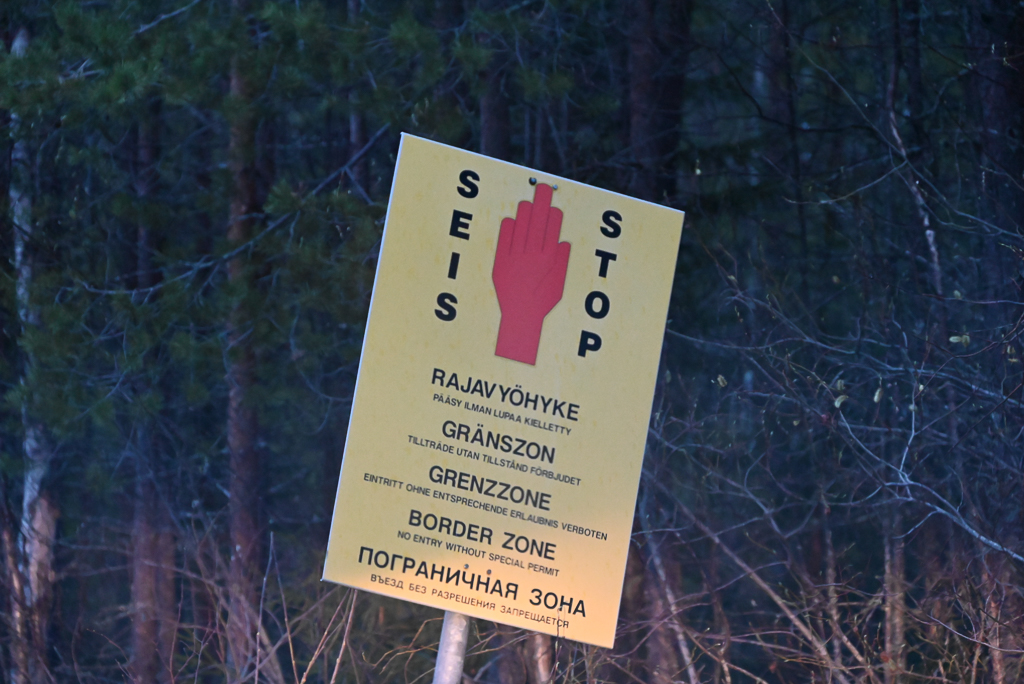
Russian Border Sign Warning
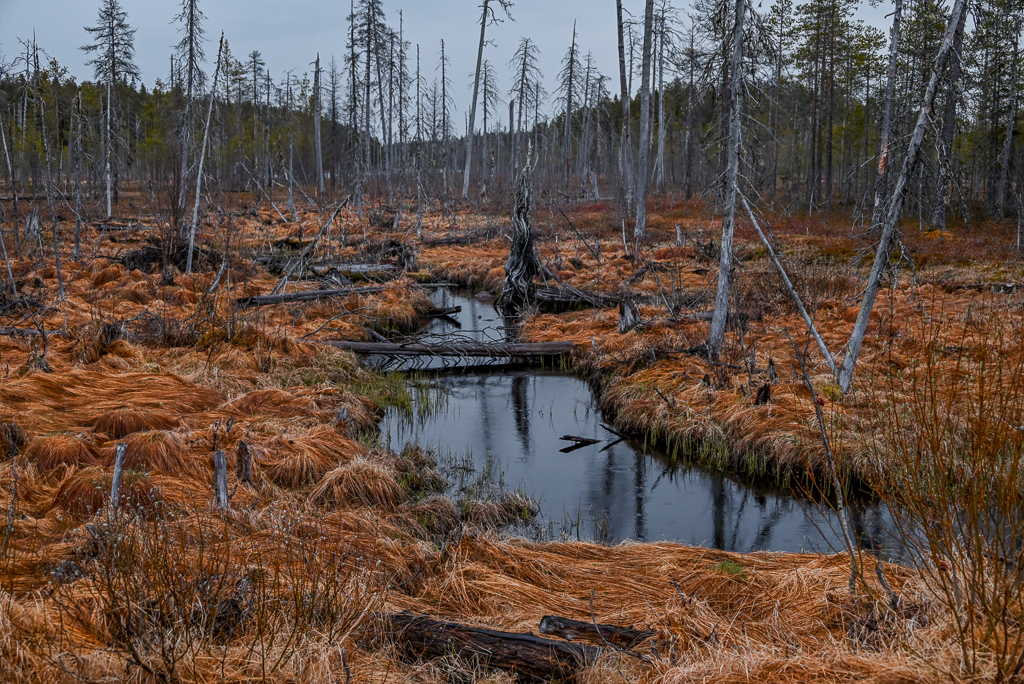
Scenery of the forest at midnight
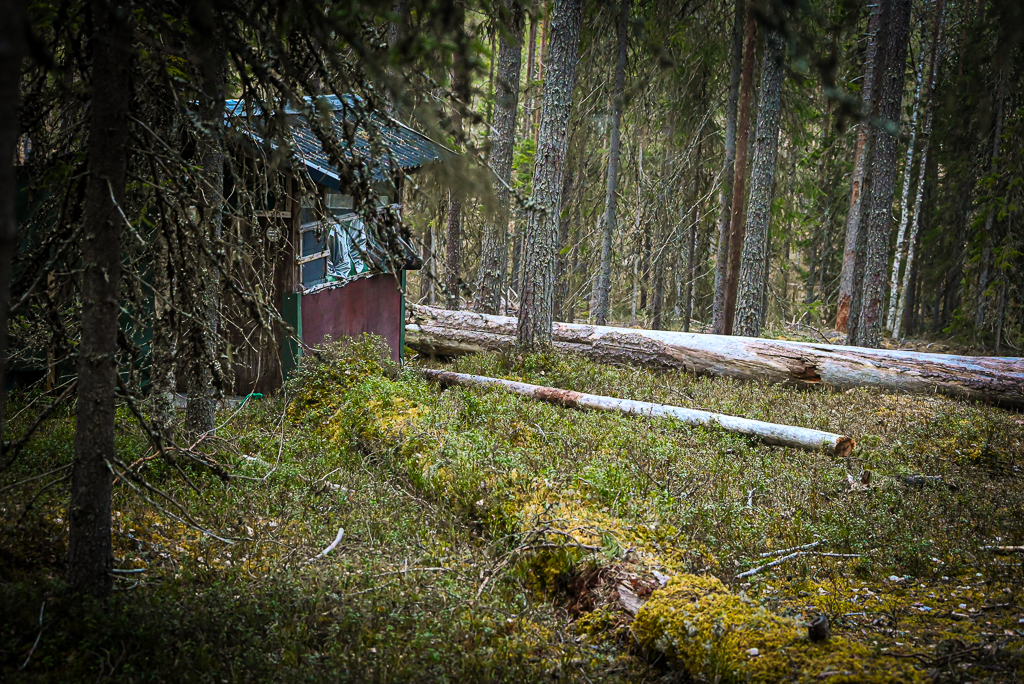
Forest Hide
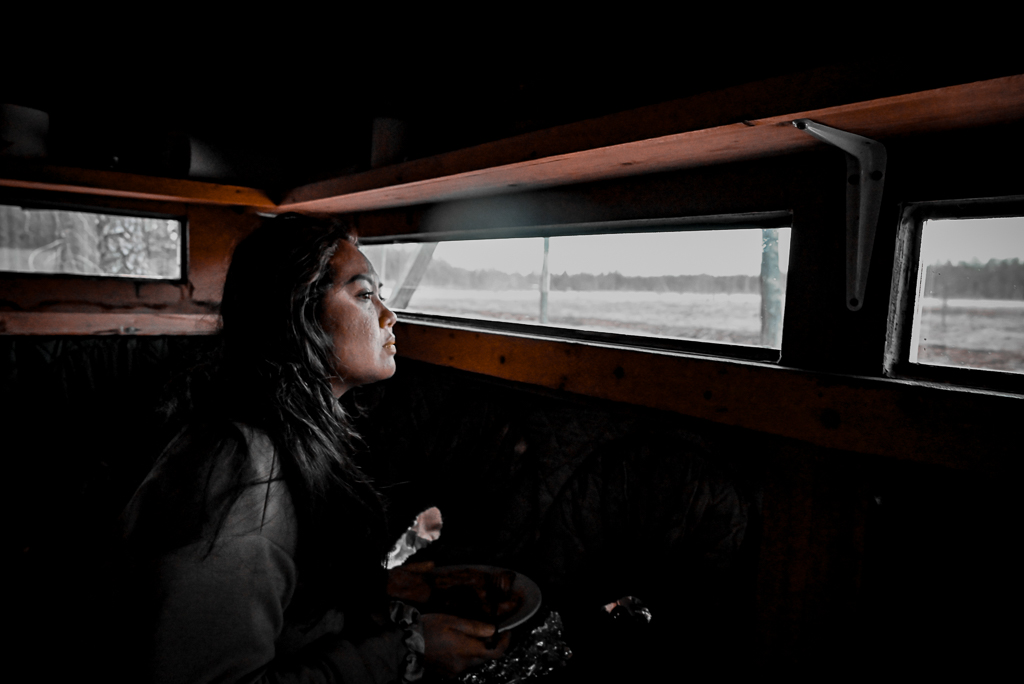
Paula in the Swamp Hide
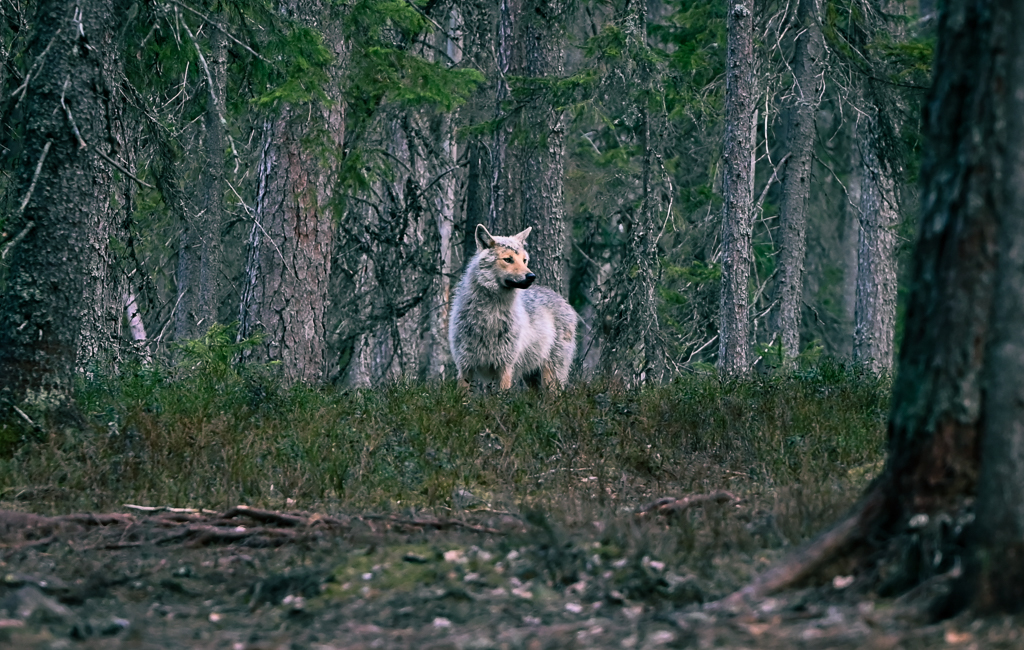
Wolf
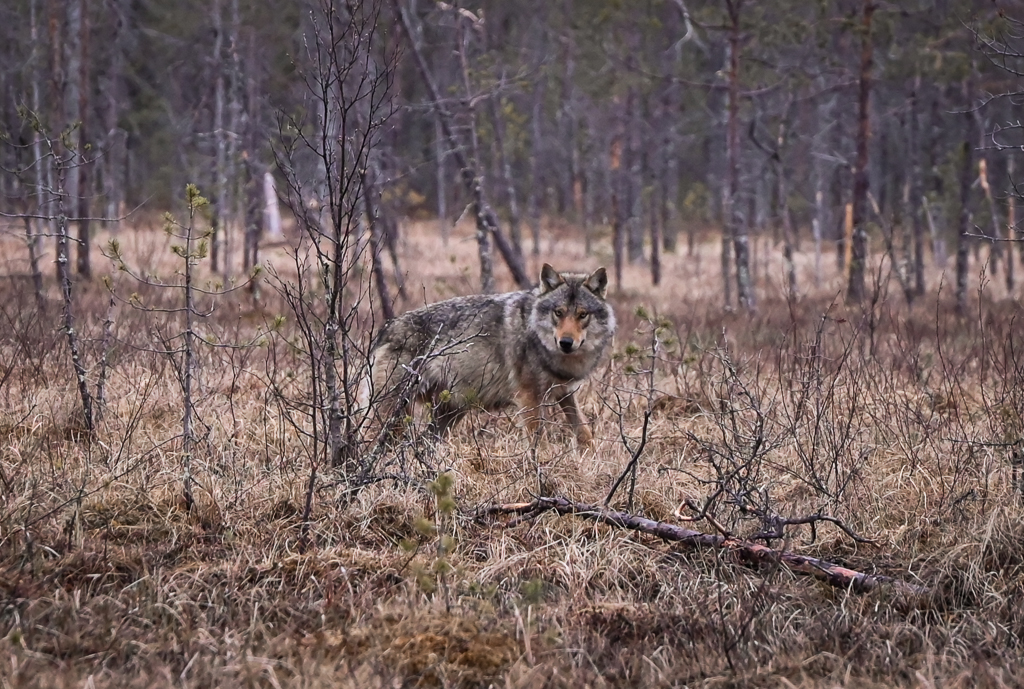
Wolf
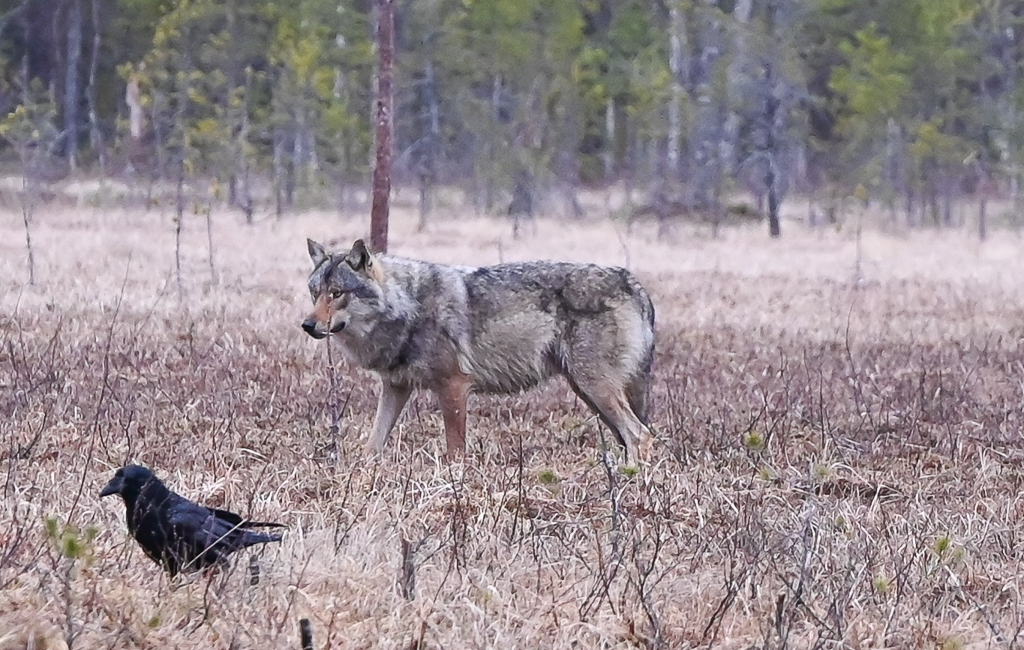
Wolf
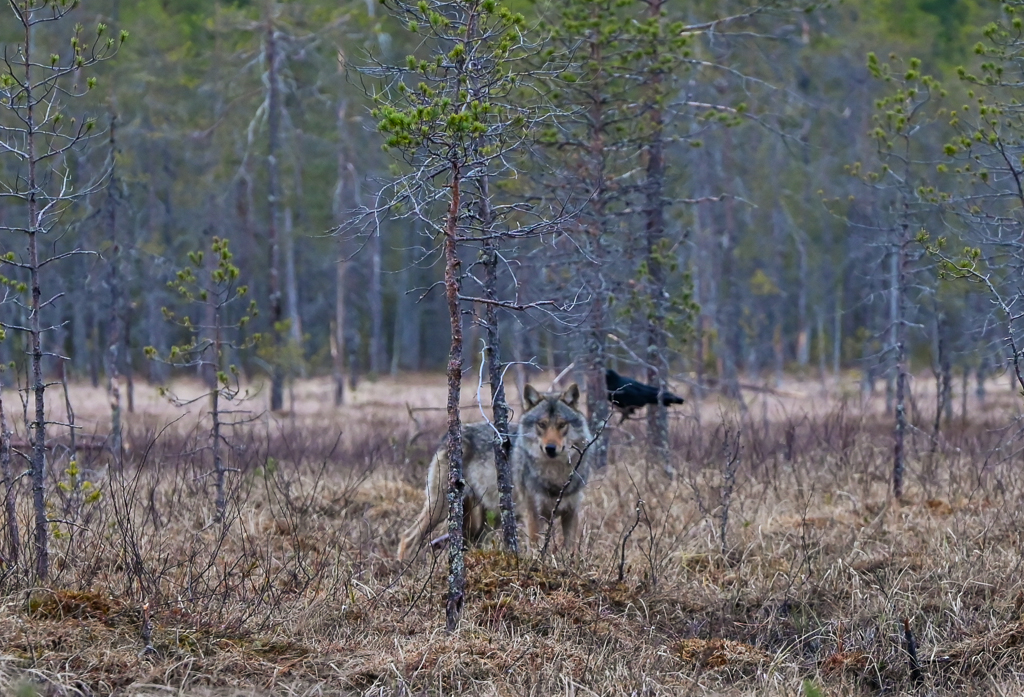
Wolf
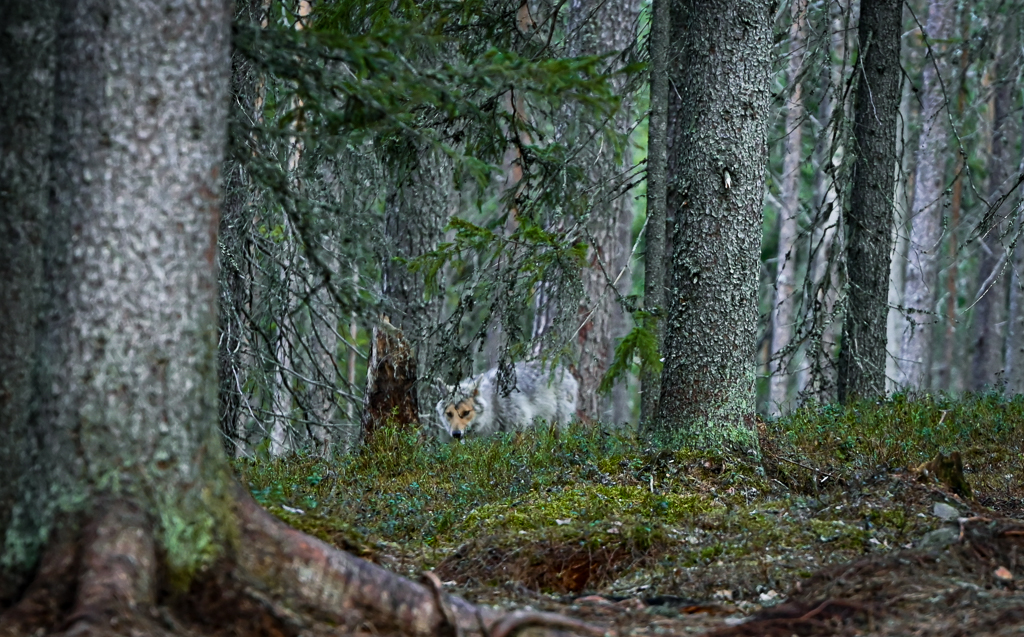
Wolf
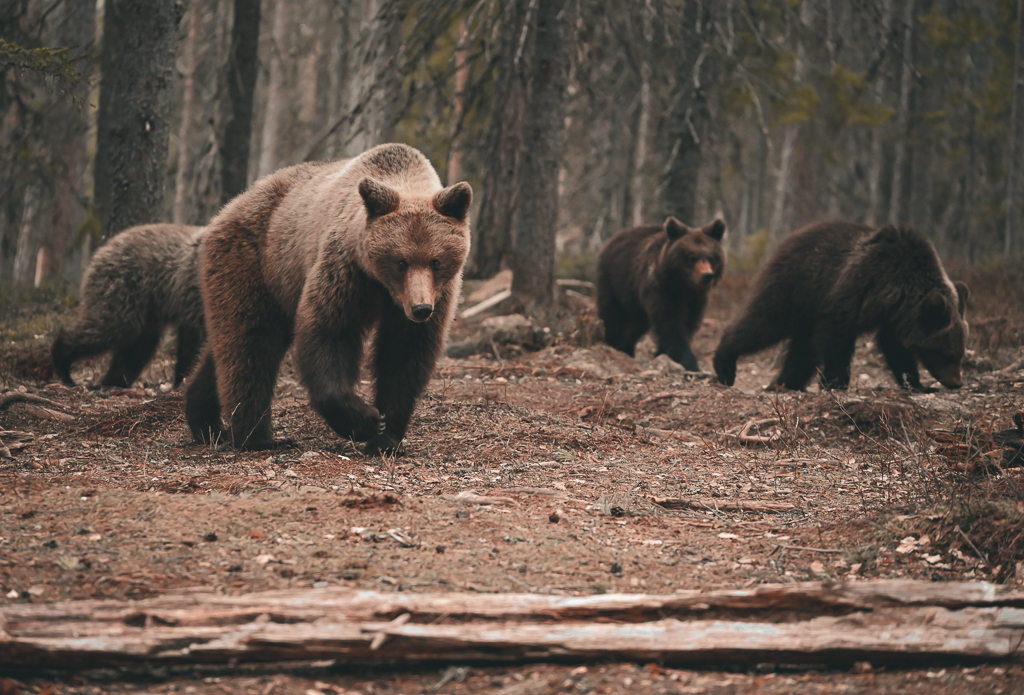
Mother bear and cubs
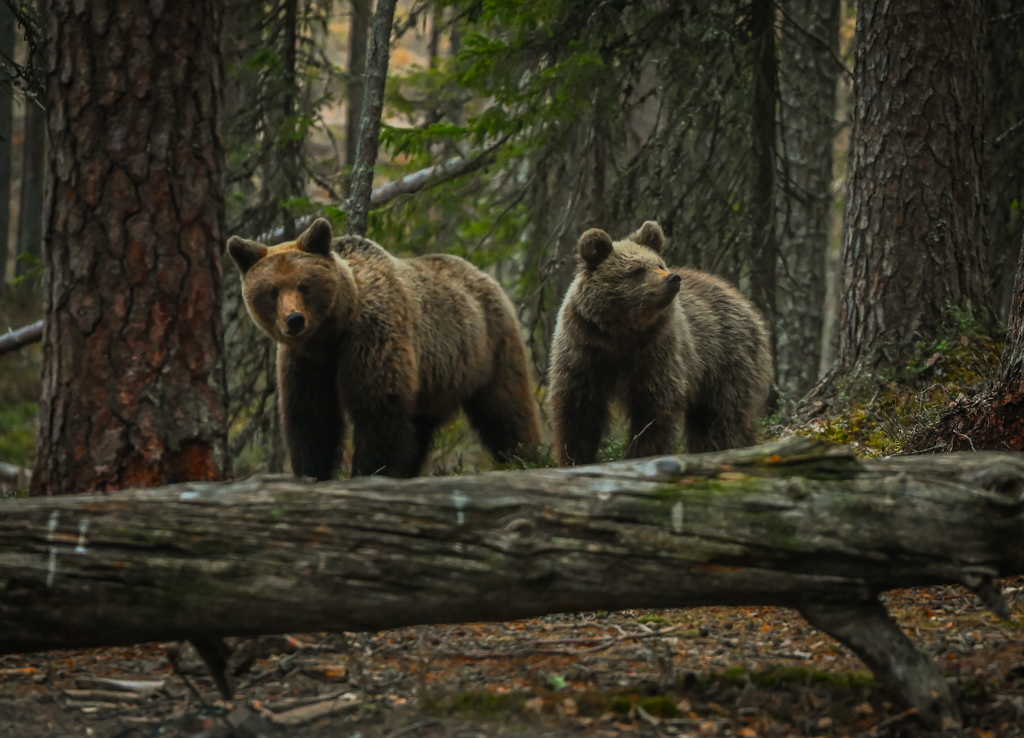
Mother bear and cubs
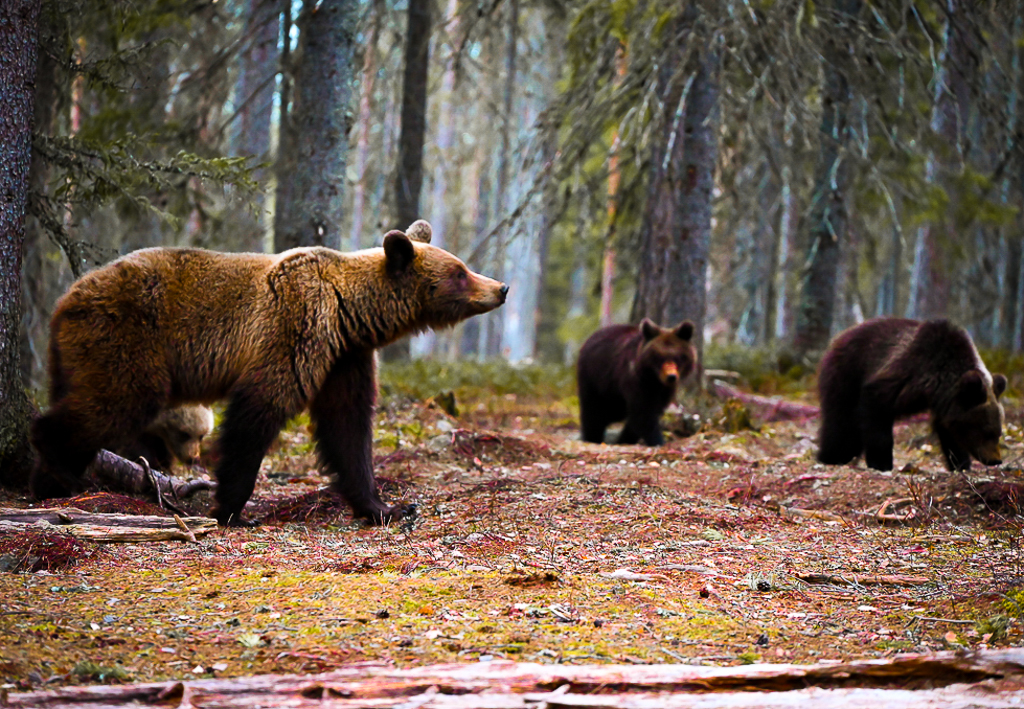
bear family
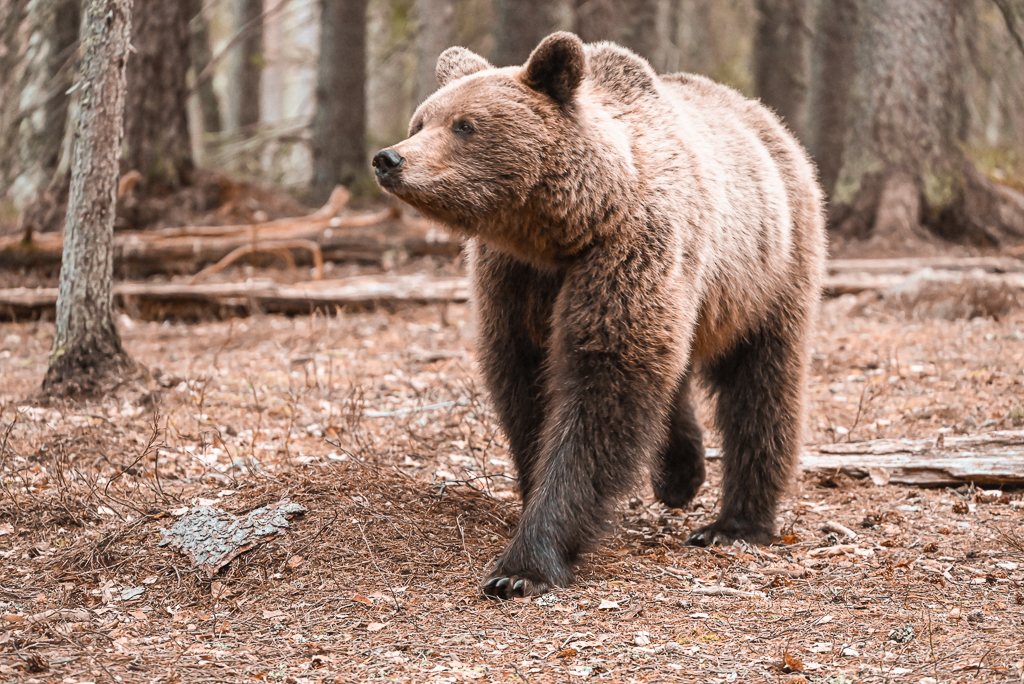
Mother bear
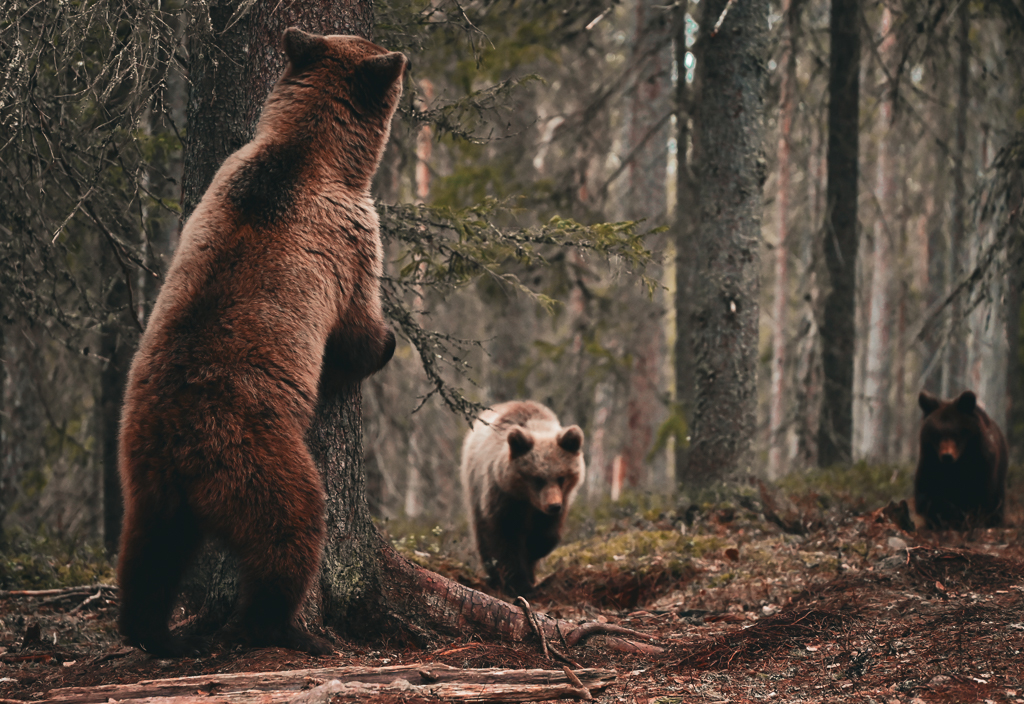
Mother bear and cubs
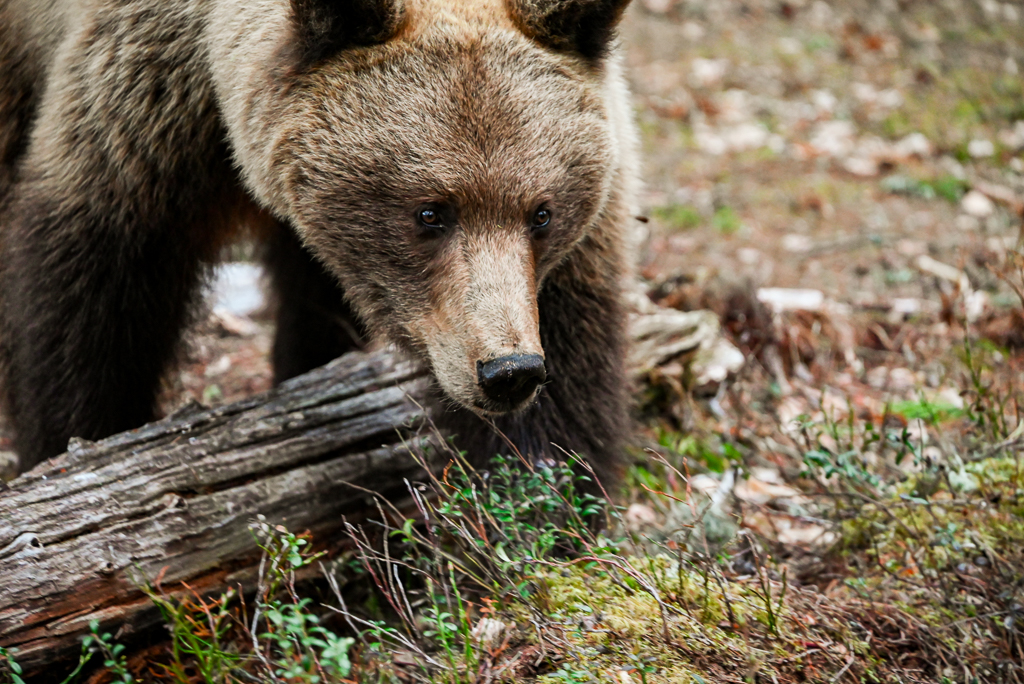
Mother bear and cubs
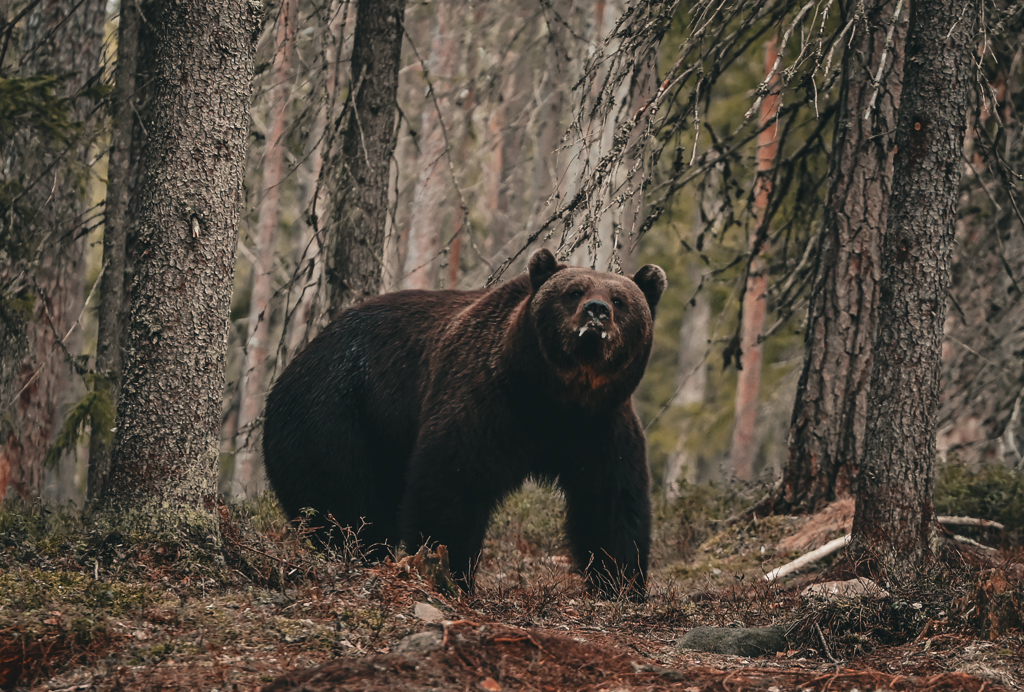
Male bear stalking the mother bear
Reminders of War on the Road South
On our last day in northern Finland, before catching the train south to Helsinki for a final overnight stop, we took our time driving slowly back toward the Kajaani train station.
Rather than rushing, we allowed ourselves to explore the quiet countryside—passing through small towns, cemeteries, and old wooden churches tucked into forested hills.
A Landscape Marked by Memory
The impact of Finland’s history with Russia was everywhere.
Each church and graveyard seemed to hold some kind of memorial, dedicated to the soldiers who fought during the Winter War and subsequent conflicts.
We saw rows of gravestones honoring local men who gave their lives defending Finland—a vastly outnumbered nation that resisted invasion with resilience and sacrifice.
These weren’t just historical markers—they were personal, local, and deeply present in everyday life here.
In a place so defined by its quiet forests and clean air, it was sobering to feel how close the past still lingers.
Every village, no matter how small, had its heroes—and they are still remembered.
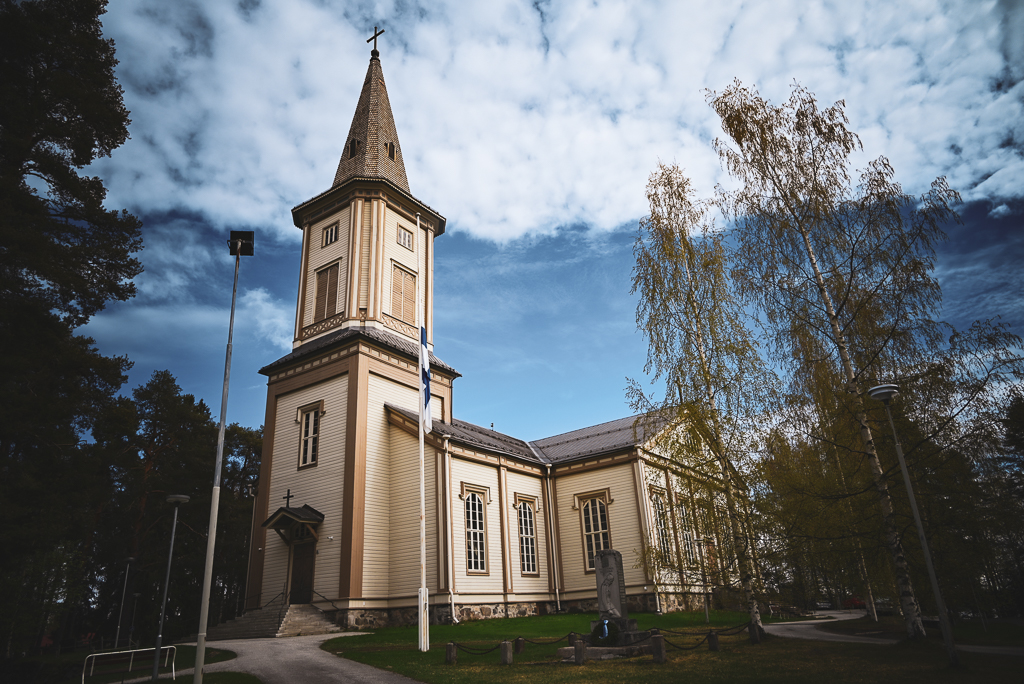
Old Finnish Wooden Church
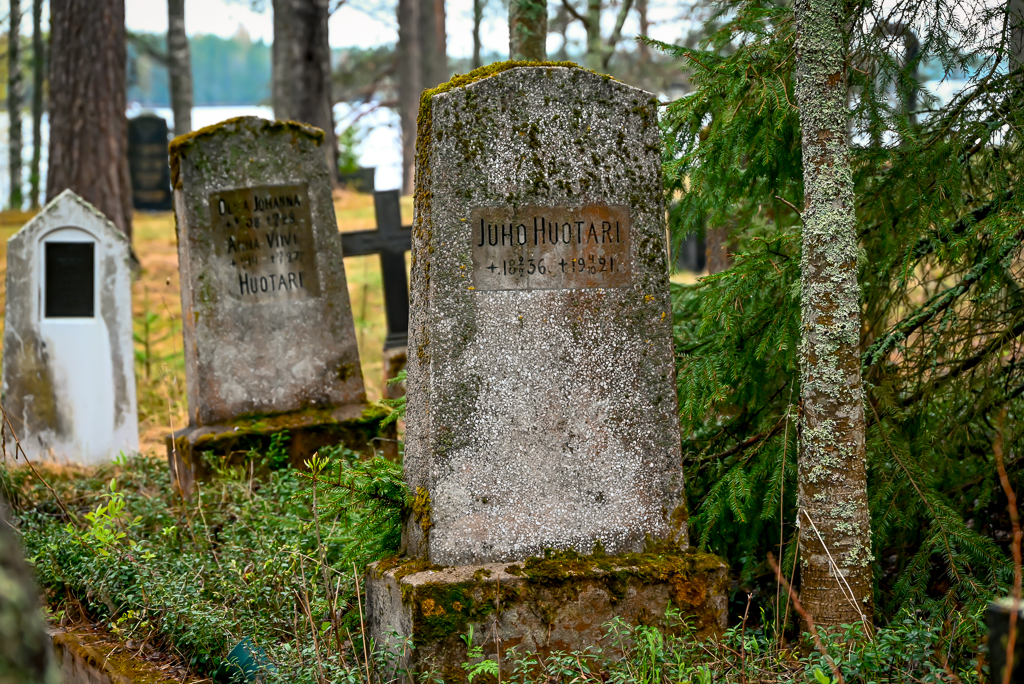
Old graveyard in the forest
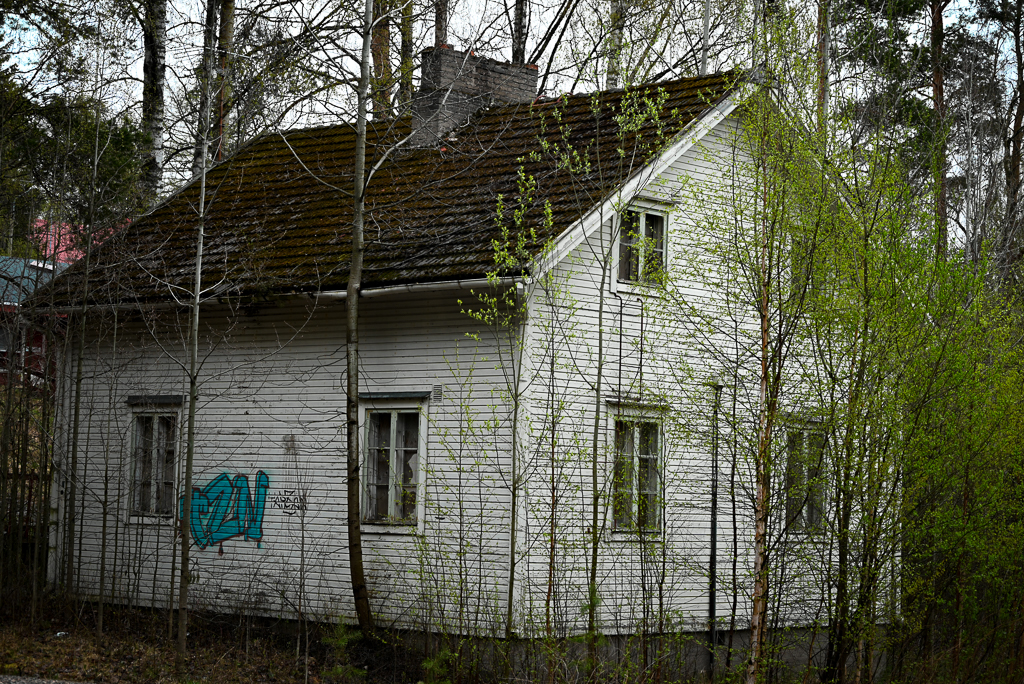
Abandoned cottage
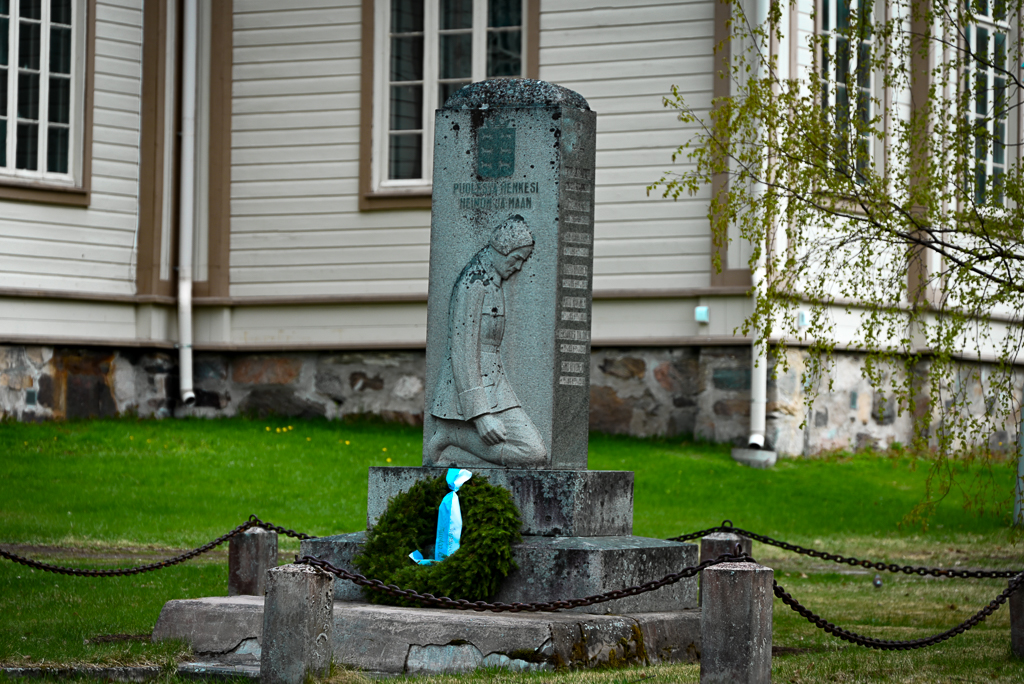
Russia and Finland War Memorial
A Perfect Spring Day in Helsinki
We spent just one day and night in Helsinki, and somehow, the weather was absolutely perfect.
The city was alive with the vibrance of spring—clear skies, blooming flowers, and the kind of golden sunlight that makes everything feel timeless.
Our base was a historic hotel in the heart of the old city, where we stayed in a charming loft room overlooking the rooftops. It was the perfect location for exploring on foot.
A City in Bloom
We spent the day wandering Helsinki’s elegant parks, which were lush with spring flowers and filled with the songs of birds. Locals were out enjoying the sun, cafes were buzzing, and the city had a lightness to it that made us wish we had more time.
It was a peaceful contrast to the rugged wilds of the north—a short but sweet urban pause.
A Ticket Scare and a Beautiful Flight
In the afternoon, we headed to the airport with just enough time to resolve a last-minute ticket mishap that nearly left us stranded. Thankfully, it all worked out.
We boarded our flight with Finnair, departing on a beautiful two-hour journey north to Tromsø, Norway—watching from the window as the Finnish forests gave way to Arctic fjords and snow-capped peaks.

